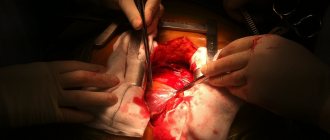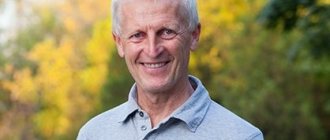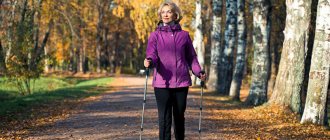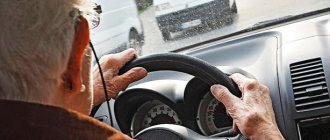Drug therapy after valve replacement
Patients undergoing surgery must take medications prescribed by their cardiologist.
- When installing donor valves, the patient will have to take immunosuppressive medications after surgery and for life. This reduces the risk of foreign tissue rejection.
- If a patient has symptoms of cardiovascular disease after valve replacement (for example, he has angina, arterial hypertension, etc.), he should take appropriate medications regularly and on an ongoing basis. The composition of therapy and dosage of medications are determined by the doctor. If at some point the recommended treatment regimen no longer “works” as before, you should definitely consult a doctor for examination and treatment correction.
- If a patient needs valve replacement due to rheumatic heart disease, they may need to take periodic antibiotics after surgery to prevent rheumatic heart attacks.
- All patients with mechanical and biological valves are prescribed anticoagulant therapy. A foreign body is actually introduced into the heart, to which the blood system reacts with increased coagulation. As a result, blood clots can form on the valve, which complicate its operation, can break off and enter the bloodstream, resulting in dangerous and even life-threatening complications - stroke, vascular thrombosis, pulmonary embolism.
Anticoagulants prevent the formation of blood clots, and therefore their use is mandatory. The most commonly used indirect anticoagulant is warfarin. People who have a biological valve should take warfarin for 3-6 months (with some exceptions), while those who have a mechanical valve will need to take the drug continuously.
Anticoagulants are drugs that actually save the lives of patients with artificial valves. However, in addition to benefits, they can also cause harm. The ability of blood to clot is a protective mechanism that prevents blood loss when injured. If anticoagulants are taken in excess, when clotting is suppressed too much, the patient may experience corresponding complications, sometimes even severe bleeding and hemorrhagic stroke.
To avoid this, it is very important to monitor the state of the blood coagulation system. Therefore, patients taking warfarin need to monitor the INR (international normalized ratio; it determines the adequacy of anticoagulant therapy). It is usually maintained at a level of 2.5-3.5 (there may be some variations depending on the specific case). A blood test to determine INR should be taken monthly.
Some patients are also recommended to take antiplatelet drugs - aspirin-based drugs - after valve replacement.
Rule No. 4: Daily physical therapy exercises
Immediately after discharge, the doctor should give a referral for exercise therapy. But you can do simple exercises at home.
Lie down on the bed and bend your knees. Rub your calf muscles vigorously, moving from your knees to your heels. After such artificial warming up of the muscles, sit on the edge of the bed with your feet on the floor. Straighten your legs one at a time until a slight tremor appears in the knee area.
While sitting on the bed, you can also raise your arms one by one until fully straightened. But this exercise is dangerous for those who have undergone a thorectomy. It is worth paying attention to breathing exercises.
Physical activity after valve replacement
Often, patients are sent for valve replacement if, before surgery, there were manifestations of chronic heart failure, which impair exercise tolerance and do not allow patients to move freely and actively.
The operation improves well-being, but patients often have no idea whether they can increase the load, in what specific mode to do this and to what limits. To determine the exercise regime, it is best for the patient to undergo a rehabilitation program in a sanatorium. An individual set of physical exercises will be selected for him, which he will perform under the supervision of a doctor. Gradually, taking into account the dynamics, the motor mode will expand. As a result, by the end of the rehabilitation period, a person will be able to live a full active life, freely endure everyday and other stresses.
If the patient does not plan to undergo rehabilitation in a sanatorium, he should contact a cardiologist with questions related to physical activity. You can clarify any questions with your doctor: the ability to engage in certain sports, lift weights, drive a car, etc.
In the first weeks, during the recovery period after surgery, it is very important to control the degree of stress. It is necessary to be active to such an extent that, on the one hand, it does not overload the heart, and on the other, does not slow down recovery and does not contribute to the development of complications.
Some patients move little because planning loads and performing exercises require discipline, diligence, and effort. Those who are too lazy to exercise should remember that physical activity improves the prognosis of heart disease, trains the cardiovascular system, has a general healing effect and helps to achieve better results from the operation.
Recovery after bypass surgery
Recovery after coronary artery bypass surgery should be carried out under the supervision of a specialist. This is important not only because the patient needs to quickly normalize his condition, but also because CABG eliminates only the consequences of cardiac dysfunction. The underlying cause, for example, atherosclerotic vascular lesions, remains. Coronary artery bypass surgery is a serious trauma for the body; it leads to many responses that can become pathological.
Recovery goals
The patient and the specialist face a number of tasks, the success of which determines the effectiveness of the operation.
These include:
- prevent the development of complications;
- resume heart function in full;
- stimulation of regenerative processes in damaged areas;
- slow down the progression of atherosclerotic and other pathological processes in the myocardium;
- adapt the patient to psychological and physical stress;
- to form skills that are relevant for new living conditions: household, social, labor.
It is considered that the set goals have been achieved if the patient returns to a lifestyle relevant to a healthy person.
Recovery after bypass surgery includes the following areas:
- patient care in the first days;
- drug therapy;
- systematic monitoring of condition dynamics;
- attitude towards a healthy lifestyle and giving up bad habits;
- physical rehabilitation;
- breathing exercises;
- mental rehabilitation;
- physiotherapeutic procedures and sanatorium-resort treatment.
8
24/7
Recovery activities in the first days
After the operation, the patient is transferred to the intensive care unit, where he is under the control of devices and medical personnel. At this time, a number of examinations are carried out:
- general blood analysis;
- X-ray;
- electrocardiography.
Recovery after bypass surgery during this period requires the patient to stay warm, so he is wrapped in a warm blanket. On the first day, the temperature may rise - this is a variant of the norm and a manifestation of the body’s protective functions. Also characteristic of the recovery state is increased sweating.
The patient spends 1-1.5 weeks in the hospital. A week after CABG, the sutures are removed from the chest and leg, if the vein was taken from there. It takes about 6 weeks for the sternum to heal. During this period, high physical activity is prohibited. Using a special bandage will help speed up recovery after bypass surgery. Antibacterial drugs, painkillers and sedatives are prescribed.
It is necessary to perform breathing exercises - a specialist will teach them before the operation. The easiest way to develop your lungs is to inflate balloons. However, there are special techniques that are used for recovery after coronary artery bypass surgery.
To prevent congestion, vibration massage is performed over the lung area with gentle tapping movements.
Despite bed rest, it is necessary to move - change body position. Once the doctor gives permission, you can turn on your side. Physical activity is increased gradually: first, you are allowed to sit on a chair, then move around the ward, along the corridor. After this, the patient tries to walk up the stairs. Before discharge, he takes walks in the fresh air.
Further rehabilitation
Wearing a bandage and compression stockings will speed up recovery after cardiac bypass surgery. You can buy them at an orthopedic store.
Water procedures are not prohibited, but washing is only allowed in the shower, and so that a direct stream of water does not fall on the wound area. Swimming and visiting the pool are allowed only after the sternum has healed.
Drug treatment is based on taking drugs such as:
- antiplatelet agents;
- ACE inhibitors;
- beta blockers;
- statins.
Antiplatelet agents are needed to thin the blood. These are medications that patients with coronary artery disease must take for life. The most common drug is aspirin.
Beta blockers reduce the load on the heart and normalize heart rate and blood pressure. Their use is relevant for hypertension, tachyarrhythmia, and heart failure.
Statins are characterized by an anti-inflammatory effect.
Physical recovery after bypass surgery begins almost immediately. The very next day the patient sits down, and on the second day he gets out of bed. Gymnastics and massage are necessary.
Recommended types of sports activity are walking, walking in the fresh air, and subsequently swimming. Experts recommend using cardio equipment, cycling, and walking up the stairs.
8
24/7
The recovery period after bypass surgery does not prohibit sexual activity. However, you should choose positions that will not put pressure on the chest. But you will have to give up driving a car for a month. Doctors do not advise traveling during the first few months. If there is a need to leave, then before departure it is mandatory to undergo a cardiological examination and consult a specialist.
Mental recovery after bypass surgery is an integral part of rehabilitation. Psychoemotional disorders are often a consequence of complex surgery. Patients experience increased anxiety and doubts about the possibility of improving their well-being. Psychosomatics works in such a way that this uncertainty flows into a deterioration in physical condition: headaches and dizziness appear. To avoid such situations, it is necessary to work with a psychotherapist. New attitudes are formed, and if necessary, drug treatment is used - sedatives. Physiotherapy and massage are also effective.
Lifestyle
Smoking after CABG is strictly prohibited. Nicotine leads to increased blood clotting, leads to vasospasm, impairs the transport of oxygen to tissues and the conduction of impulses in the myocardium.
Recovery after heart bypass surgery includes physiotherapy: electrosleep, magnetic therapy, laser, electrophoresis.
It is highly recommended, if possible, to undergo recovery after bypass surgery in a specialized sanatorium. The advantages in this case are numerous: constant monitoring combined with a well-designed diet and the implementation of dosed exercises under the supervision of a specialist.
Possible complications
The patient should pay great attention to changes in his well-being. You should contact a specialist immediately in the following cases:
- changes indicating the development of an inflammatory process in the suture area: hyperemia, local increase in temperature, pain, discharge from the wound;
- general weakness;
- difficulty breathing;
- weight gain, swelling;
- tachycardia;
- chest pain.
Recovery after heart bypass surgery, both in the hospital and at home, should be under the supervision of a doctor, as there is a risk of complications. Possible consequences include:
- arrhythmias;
- bleeding;
- heart attack;
- stroke;
- thrombosis;
- penetration of infection into the wound;
- renal failure;
- chronic pain in the incision area.
Prevention
One of the key factors in both primary and secondary prevention of heart pathologies is proper nutrition. Recovery after bypass surgery involves following a strict diet.
Considering the danger of developing atherosclerosis and ischemic heart disease from dietary factors, it is necessary to highlight the following:
- high calorie foods leading to obesity;
- lack of polyunsaturated acids, which are needed to normalize cholesterol metabolism;
- foods rich in cholesterol;
- fiber deficiency;
- excessive salt intake;
- excess animal proteins that impair vascular permeability and negatively affect lipid metabolism and blood clotting;
- deficiency of substances necessary for the body: magnesium, potassium, zinc, iodine, vitamins PP, A, ascorbic acid, B6.
First of all, it is necessary to reduce the calorie intake. It should be 2400-2600 kcal.
The diet should include 70-90 g of protein, 80 g of fat, 300-350 g of carbohydrates.
5-6 small meals per day are recommended. Food should be at normal temperature and not over-salted. The permitted volume of liquid is 1.2-1.5 liters per day.
8
24/7
Experts advise including the following dishes on the menu:
- soups based on vegetable broth with well-cooked cereals;
- lean meats and poultry;
- seafood;
- dairy products;
- whole grains;
- vegetables and fruits;
- fresh juices;
- almonds and walnuts.
Patients with diabetes are at high risk of developing complications. These people are at risk, which requires special attention from medical personnel. It is important to provide the body with proper rest - sleep at least 8 hours, and avoid emotional turmoil.
The prognosis for patients after surgery is favorable - life expectancy can be increased by 10-15 years.
After cardiac bypass surgery has been performed, recovery must proceed in strict accordance with these recommendations; you cannot rely only on the operation performed. The professionalism of the doctor also plays a big role.
Diet after valve replacement
Middle-aged and elderly patients, especially those with coronary heart disease, are advised to follow a special diet. It is necessary to reduce the content of animal fats and easily digestible carbohydrates in the diet, as well as reduce the consumption of table salt, coffee and other stimulants. At the same time, you should enrich your diet with vegetable oils, fresh vegetables and fruits, fish and protein products.
Young patients who do not have atherosclerosis and its complications may not be so strict about their diet, although it is best for them to formulate a diet in accordance with the canons of a healthy diet - to prevent IHD.
Excessive alcohol consumption is contraindicated in all patients after heart valve replacement.
Heart surgery
Surgery may be needed for many different reasons. It often helps correct some problems that cannot be eliminated with conservative treatment. Some of the most common heart surgeries include:
- Coronary artery bypass surgery;
- repair or replacement of a worn heart valve;
- recovery from congenital heart diseases;
- implantation of devices to control the heartbeat;
- replacing a damaged heart with a donor organ.
Work after valve replacement
Within a few weeks after surgery, patients usually manage to restore their ability to work at their previous level. In some cases, a transition to easier working conditions is required. Sometimes patients are given a disability group.
The above formulations are quite streamlined, but it is impossible to give specific figures here. Much depends on which valve was prosthetized, what type of artificial valve was, in connection with what disease the operation was performed, and in what field the person is employed.
In general, the forecast for work activity is favorable. Even professional athletes returned to sports after this surgical intervention and successfully continued their careers.
Heart-lung machine
Traditionally it is believed that surgery is best done when the heart is not beating and has no blood supply. You can stop the heart without harm using a heart-lung machine (extrapulmonary circulation technique). During the procedure, a cardiopulmonary resuscitation machine is connected, and doctors administer hypothermia to slow down the body's metabolic processes.
Normally the brain dies within 3-4 minutes without a blood supply, but at a body temperature of 28°C to 32°C it can survive surgery. Perfusionists help support this process and operate the cardiopulmonary resuscitation machine.
After performing any necessary procedures, such as creating an implant around a damaged artery, repairing valves, or treating congenital abnormalities, the heart surgeon closes the chest using a wire that remains inside the body and sutures the incision. The patient is sent to the intensive care ward.
Other recommendations
There are a few other mandatory tips that patients undergoing valve replacement surgery must follow.
- If you experience symptoms of cardiac problems (chest pain, a feeling of interruptions in the heart), signs of circulatory problems (swelling in the legs, shortness of breath) and other unexpected symptoms, you should immediately consult a doctor.
- Patients who have had a biological valve installed are not recommended to take calcium supplements. In their diet, it is advisable for them not to overuse products containing it: milk and dairy products, sesame seeds, nuts (almonds, Brazilian), sunflower seeds, soy.
- All doctors, including the dentist, need to warn the patient that he has an artificial valve installed.
Following the necessary recommendations will help the patient maintain excellent health for a long time and live a full life.
Open heart surgery
And although this approach has become more popular with the development of minimally invasive cardiovascular surgery, in most cases open traditional surgery is still used. It is recommended when treatment involves complex reconstruction of the coronary vessels, valves, cavities and other parts of the heart in one operation.
The procedure is performed under general anesthesia and lasts about 5-6 hours. First, the surgeon makes a long incision (15-20 cm) in the patient's chest to gain access to the heart. After this, a cardiopulmonary resuscitation machine is connected, which supplies the body with oxygen and nutrients, and the heart temporarily stops.
Caring for surgical patients
Basically, care for surgical patients is provided by relatives and loved ones. In this case, a very serious burden falls on their shoulders, associated with a high level of responsibility and a lot of work. But there is a convenient and optimal option for monitoring a person after surgery: a nurse or a qualified home nurse who will provide ongoing care and care for the patient, as well as professionally and competently provide the necessary assistance.
The need for a nurse is determined based on the degree of complexity of the patient’s condition. Of course, help is needed for patients after serious surgical operations, when they are not able to do everything necessary for a speedy recovery, or the patient is bedridden, and the services of a nurse are necessary.
It is important to consider that if a patient has been discharged home, this does not mean that he is completely healthy. It is necessary to carry out certain procedures, monitor drainage and bandage so that there are no complications. A home nurse will handle all responsibilities.
In order for postoperative complications to be reduced to a minimum, it is important to strictly follow all doctor’s instructions, adhere to hygiene rules, rules of antisepsis and asepsis, maintain proper nutrition, monitor the timeliness of urination and bowel movements, and also strictly follow all doctor’s instructions. All these services and care for surgical patients are provided by professional nurses who know and adhere to the rules for managing such patients.









